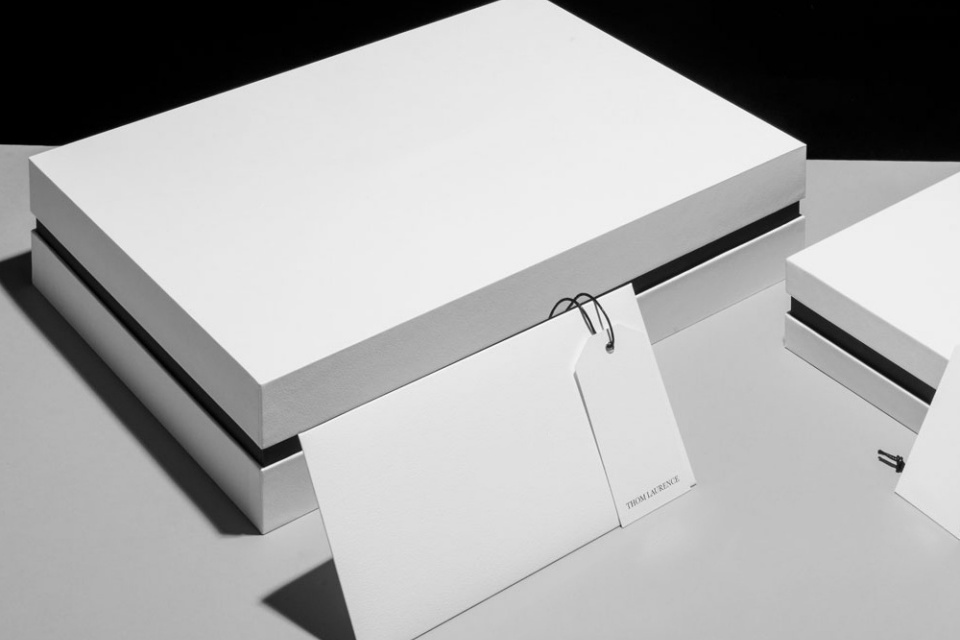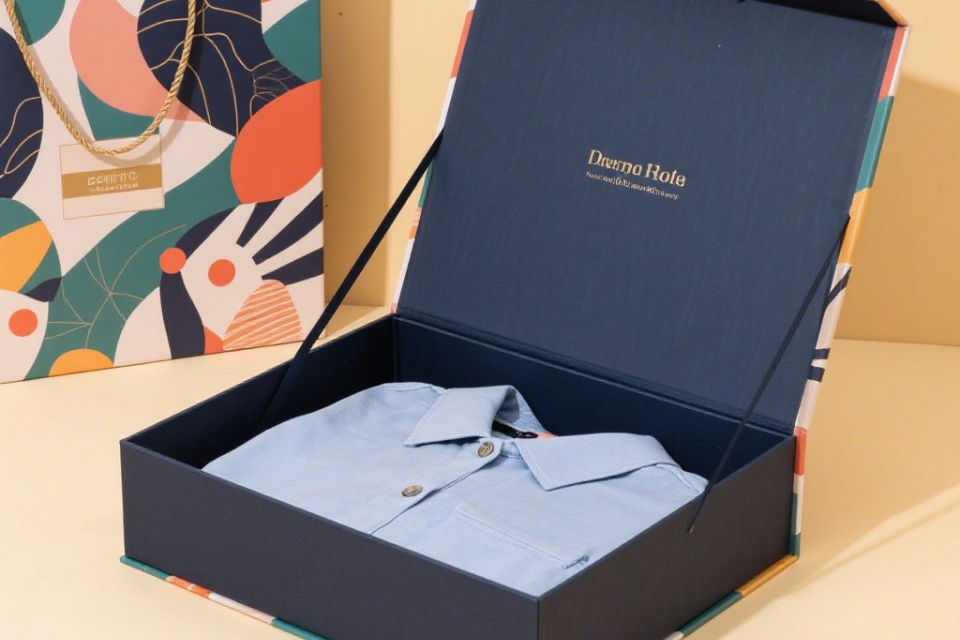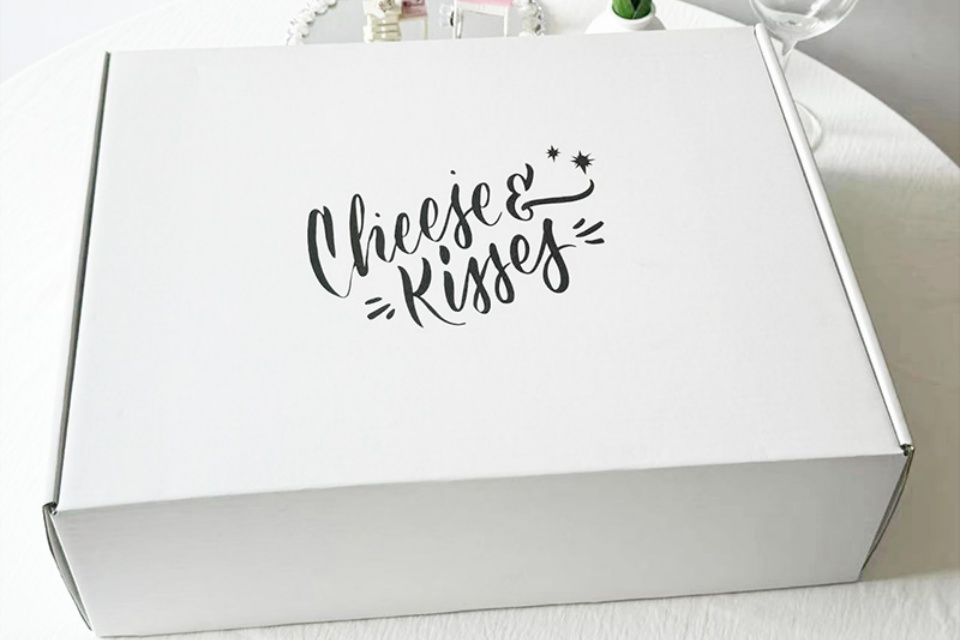Our News
Apparel Packaging Design Trends
Apparel Packaging Design Trends
Summary
Apparel packaging design trends encompass the evolving styles and materials used for packaging clothing and accessories, reflecting broader societal shifts towards sustainability and consumer engagement. This area of design is notable for its rapid transformation, driven by innovations in eco-friendly materials and the growing importance of branding in consumer purchasing decisions. As the fashion industry becomes increasingly aware of its environmental impact, many brands are opting for sustainable packaging solutions that resonate with eco-conscious consumers.
Current trends highlight a significant shift towards eco-friendly materials, including recycled paper, biodegradable plastics, and compostable packaging options. These materials not only minimize environmental harm but also align with consumer expectations for sustainable practices within the fashion industry. Additionally, innovative design approaches, such as minimalist packaging and reusable containers, emphasize functionality while enhancing the overall consumer experience. This dual focus on sustainability and aesthetics is reshaping how brands communicate their identity and values through packaging.
The integration of branding elements into packaging remains a critical aspect of apparel packaging design. Custom designs serve as powerful marketing tools that reinforce brand identity and foster consumer loyalty. Furthermore, aesthetic trends such as the use of earthy colors, brutalist typography, and unique structural designs distinguish brands in a competitive market, appealing to consumers' desire for authenticity and emotional connection.
Despite these advancements, the apparel packaging design landscape is not without controversy. The shift towards sustainable packaging has raised questions about the effectiveness and true eco-friendliness of certain materials and practices. Critics argue that without rigorous standards and transparency, some so-called sustainable options may still contribute to environmental degradation. As the industry navigates these challenges, the ongoing dialogue around responsible packaging design remains vital in shaping future trends and consumer expectations.
Historical Overview
The evolution of apparel packaging has been influenced by various materials and technologies over centuries, reflecting changes in consumer needs and societal advancements.
Early Packaging Materials
The concept of packaging can be traced back to ancient civilizations where materials such as animal skins, woven cloth, and wooden crates were used to protect and transport goods. For instance, wine jars from Greece, dating back to the 3rd century BC, were sealed with wax and designed for easy handling, marking one of the earliest examples of packaging systems. During the Middle Ages, Europeans began utilizing wooden barrels for food storage, highlighting the shift towards more durable packaging solutions.
Development of Paper and Metal Packaging
In the late 17th century, the establishment of the first paper mill in the U.S. near Philadelphia in 1690 marked a significant development in packaging materials, as paper became increasingly accessible. By the early 1800s, tin plating had been invented, allowing for the production of tin cans, which became essential for food preservation. Nicholas Appert's discovery that food sealed in tin containers could be preserved by boiling further established metal packaging as a viable food-grade material.
Rise of Plastic in the 20th Century
The introduction of plastics in the 20th century revolutionized packaging, beginning with the widespread use of polyethylene post-World War II, a result of its increased production during the war. Plastics were favored for their durability, lightweight properties, and cost-effectiveness, leading to their rapid adoption across various packaging applications. The latter half of the 20th century saw a move from paper to plastic as the primary packaging material, driven by innovations in plastic manufacturing.
The Shift Towards Eco-Friendly Solutions
As the 21st century progressed, there was a growing awareness of the environmental impact of traditional packaging materials, leading to the development of eco-friendly alternatives. The fashion industry began to embrace sustainable practices, exploring materials like compostable poly bags and recycled paper. This shift is not only reflective of consumer demand for sustainability but also a response to the increasing need to minimize the carbon footprint associated with packaging.
Current Trends in Apparel Packaging Design
Eco-Friendly Materials
A significant trend in apparel packaging design is the shift towards eco-friendly materials. Brands are increasingly prioritizing sustainable packaging options, replacing traditional materials like plastic and Styrofoam with alternatives such as recycled paper, cardboard, and plant-based plastics. These materials not only minimize the environmental impact but also resonate with consumers who prefer products that align with their values concerning sustainability. Compostable packaging, made from materials like corn and sugar cane, has gained popularity as it breaks down efficiently in composting systems, contributing nutrients back to the earth.
Innovative Design Approaches
Beyond materials, innovative design approaches are transforming apparel packaging. Minimalist packaging emphasizes simplicity and functionality, eliminating unnecessary elements to reduce waste while maintaining aesthetic appeal. This approach can enhance brand perception by focusing on efficiency and sustainability without compromising the integrity of the packaging. Moreover, the use of reusable containers and mono-material constructions allows brands to streamline their packaging processes and make recycling easier for consumers.
Branding and Consumer Experience
The integration of branding elements into packaging design continues to be a vital trend. Custom apparel packaging not only serves practical shipping purposes but also acts as a marketing tool that enhances brand identity. Packaging designs often reflect the brand's style and target demographic, with options such as branded clothing handbags that elevate the consumer experience post-purchase. This strategic approach enhances perceived value and fosters customer loyalty.
Aesthetic Trends
Recent aesthetic trends in apparel packaging include the rise of brutalist typography, which draws inspiration from architectural styles to create striking visual effects. This trend utilizes raw, structural letterforms and minimal decoration, focusing on authenticity and strength, thereby setting brands apart in a competitive market. Additionally, the use of earthy colors and natural textures in packaging designs reinforces the connection to sustainability and appeals to environmentally conscious consumers.
Styles of Fashion Boxes
Luxury Packaging
High-end fashion brands often utilize luxurious materials and designs in their packaging to convey exclusivity and sophistication. This trend has influenced the development of luxury packaging across various industries, leading to the rise of premium materials such as embossed paper, metallic finishes, and custom boxes that enhance the perceived value of products and align with the brand's high-end image.
Types of Luxury Boxes
Rigid Boxes: Often used for high-value items, these boxes are made from thick paperboard and are designed to provide a premium feel. They often feature decorative elements like ribbons or magnetic closures to enhance their appeal. Folding Cartons: Known for their lightweight design and versatility, folding cartons are commonly used in the fashion industry. These paperboard packages can be customized in shape and size, making them suitable for various apparel items. They are easy to assemble from flat sheets and can be produced in eco-friendly materials. Custom Gift Boxes: Tailored to reflect the brand's identity, these boxes are often crafted from chipboard or corrugated cardboard. They can include branding elements such as logos and color schemes, enhancing brand recognition during the unboxing experience.
Eco-Friendly Packaging
With an increasing consumer focus on sustainability, fashion brands are adopting eco-friendly packaging solutions. This shift emphasizes the use of recyclable, biodegradable, and sustainable materials, appealing to eco-conscious consumers.
Sustainable Materials
Recyclable Kraft Paper Boxes: Made from wood pulp, these boxes are not only recyclable but also stylish, aligning well with fashionable apparel branding. They represent an eco-friendly and cost-effective packaging solution. Biodegradable Mailers: For lightweight apparel, biodegradable mailers are an effective option. Made from sustainable materials, these mailers can help reduce environmental impact while ensuring safe delivery of products. Reusable Bags: Packaging bags made from recycled plastic or FSC certified paper are another sustainable alternative. They cater to soft clothing items and contribute to a brand's commitment to environmental responsibility.
Innovative Packaging Designs
Fashion packaging is evolving with new trends that enhance both functionality and aesthetics. Innovations like carbon-negative inks, compostable coatings, and modular structures are gaining popularity as brands strive to meet rising environmental expectations while maintaining product integrity.
Styles of Wraps
Innovative Packaging Designs
The use of innovative packaging designs plays a crucial role in attracting customers and enhancing the overall shopping experience. Wraparound label designs, for example, create a sense of curiosity by allowing the product name and details to span around the packaging, encouraging consumers to hold the product to fully appreciate its design. This approach not only defies traditional expectations of product packaging but also presents a visually striking appearance when multiple products are displayed side-by-side on shelves.
Sustainable Options
Sustainability is a significant trend in apparel packaging, influencing the choice of wraps and inserts. Brands are increasingly opting for eco-friendly materials such as compostable mailers and sustainable sticky stickers, which reflect a commitment to environmental responsibility. The incorporation of sustainable textiles, such as jute and hessian sacks, is also on the rise, particularly for brands that prioritize eco-conscious practices.
Functional and Aesthetic Features
Wraps in apparel packaging often serve both functional and aesthetic purposes. Tissue paper, for instance, protects garments during transit while providing a polished presentation when opened by customers. Custom paper bags and branded tissue paper not only enhance the visual appeal but also elevate the overall brand experience, transforming a simple purchase into a chic statement for consumers. Moreover, the use of padded mailers with biodegradable materials highlights a growing focus on combining protection with environmental considerations, as brands seek to ensure the safe delivery of delicate items.
Flexibility and Customization
Flexibility in packaging design allows for greater customization, catering to various products and consumer preferences. Flexible packaging materials, including resealable pouches and eco-friendly options, enable brands to present their apparel in unique ways while maintaining an environmentally friendly approach. Hang tags, which can be tailored to share specific information about garments or promote sustainability efforts, further enhance the consumer's connection to the product.
Technological Advancements
The apparel packaging industry has undergone significant transformations in recent years, driven largely by technological advancements that enhance efficiency, sustainability, and consumer engagement.
Smart Packaging Solutions
Smart packaging is another cutting-edge trend that incorporates various technologies like QR codes and NFC (Near Field Communication) tags to enhance customer interactions with packaging. This technology enables consumers to access detailed product information, tutorials, and even engage in loyalty programs through their smartphones. Furthermore, smart packaging can include integrated sensors that monitor environmental factors, such as temperature and humidity, ensuring that products remain in optimal conditions throughout the supply chain.
Digital Innovations in Packaging
Digital prototyping has emerged as a pivotal development, minimizing the reliance on physical samples and expediting the design process while simultaneously reducing material waste. The concept of digital twin technology allows designers to create virtual replicas of products and their packaging, facilitating rigorous testing and refinement in a digital environment before moving to physical production. Moreover, AI-powered software is increasingly utilized for material selection, analyzing factors such as durability, cost, and environmental impact to recommend the most sustainable packaging materials available.
Eco-Friendly Material Innovations
As brands prioritize sustainability, there is a growing adoption of eco-friendly materials, including biodegradable plastics, compostable films, and lightweight materials that align with green packaging goals. These innovations not only minimize environmental impact but also cater to the increasing consumer demand for sustainable solutions. For instance, plant-based bioplastics and mushroom-based packaging are gaining traction as viable alternatives to traditional materials, providing a natural and compostable option.
Enhancing Consumer Experience
The role of packaging in shaping consumer experiences has evolved, with brands now emphasizing tactile finishes and personalized elements to capture attention both in-store and online. Premium finishes, such as embossed and soft-touch coatings, are increasingly employed to enhance the unboxing experience and encourage social sharing on platforms like Instagram. Minimalist design approaches are also on the rise, simplifying packaging to reduce waste while still appealing to consumer aesthetics.
Case Studies
Innovative Packaging Approaches
Several brands in the apparel industry have adopted creative and sustainable packaging designs that not only enhance the unboxing experience but also align with contemporary consumer expectations for sustainability.
The Prisoner Wines
A notable example is The Prisoner's latest collection, "Corrections," which features labels designed by the agency Co-Partnership in collaboration with Los Angeles artist Chris Burnett. This collection comprises three wines—Malbec, Tempranillo, and Viognier—each label employing collages that challenge societal prejudices about inmates. The creative packaging serves both aesthetic and emotional purposes, inviting consumers to engage with the product on a deeper level.
Puma's "Clever Little Bag"
Puma has made significant strides in reducing its environmental footprint through its innovative "Clever Little Bag." Designed by Fuseproject, this new packaging system replaces traditional boxes and bags with a more sustainable solution, achieving a reduction in water, energy, and diesel consumption by over 60% annually. This approach reflects Puma's commitment to environmental sustainability while maintaining functionality.
Gucci's Recyclable Luxury Packaging
Gucci has redefined luxury packaging with its new range that emphasizes sustainability. By moving away from glossy plastic surfaces, Gucci now uses sustainably sourced, beater-dyed paper from FSC-certified forests. The brand has also replaced polyester handles with cotton ribbons, reducing excess packaging and offering gift boxes only upon request. This shift illustrates Gucci's dedication to maintaining its luxurious image while promoting environmental responsibility.
Champagne Collet's Cuvée Esprit Couture
In the luxury beverage sector, Champagne Collet's Cuvée Esprit Couture presents a unique packaging design featuring a box adorned with tulle for an Art Deco feel. The bottle incorporates elements of imitation leather, which can also serve as a fashionable bracelet. This trend of integrating high-end materials into packaging reflects a broader move towards decorative yet functional luxury packaging, paralleling the dynamic market of luxury fashion.
Cora's Reusable Period-Care Products
Cora exemplifies a brand focused on sustainability through its range of reusable period-care products. The packaging design utilizes a natural yet optimistic color palette, symbolizing the connection between the products and their environmental impact. By providing clear distinctions among different absorbance options, Cora enhances consumer navigation while emphasizing the importance of reducing single-use plastic waste. These case studies highlight the evolving landscape of apparel packaging, where brands are increasingly leveraging design innovation and sustainability to resonate with eco-conscious consumers while delivering impactful brand narratives.
Consumer Influence
Importance of Packaging in Consumer Choices
Packaging design plays a critical role in influencing consumer purchasing decisions in the apparel industry. Research indicates that a significant 72% of consumers base their buying choices on packaging alone. The visual appeal of packaging, including its color, shape, and overall design, is vital for attracting potential buyers. Eye-catching and unique packaging can draw customers' attention, prompting them to explore a product further, which can ultimately lead to a purchase. As the market becomes increasingly competitive, effective packaging design is essential for products to stand out and build customer loyalty.
Aesthetic Appeal and Psychological Impact
The aesthetic elements of packaging, such as color and texture, can evoke specific emotions and perceptions among consumers. For instance, vibrant colors may attract younger audiences, while more subdued tones could appeal to a mature demographic. Understanding the psychological implications of color can help brands align their packaging with the identity that resonates with their target market. A well-designed package not only communicates quality and value but also reflects the freshness and appeal of the product, making it irresistible to consumers.
Sustainability and Consumer Expectations
In recent years, sustainability has emerged as a non-negotiable factor influencing consumer behavior. A study by McKinsey revealed that 43% of U.S. consumers consider sustainable packaging as a crucial aspect when making purchasing decisions. As environmental concerns become increasingly prominent, brands that adopt eco-friendly practices in their packaging design are likely to attract a loyal customer base. Eco-conscious shoppers prefer brands that reflect their values, leading to a demand for sustainable materials such as recycled paper and biodegradable plastics. Consequently, the integration of sustainability into packaging design is now seen as essential for meeting consumer expectations and driving purchasing decisions.
Categories
Latest News
Contact Us
Contact: Aaron Lee
Phone: +8613570866244
Tel: +8675529490260
Add: Li Songlang 2nd Industrial Zone,No.18,FengTang Rd,Guangming New District


